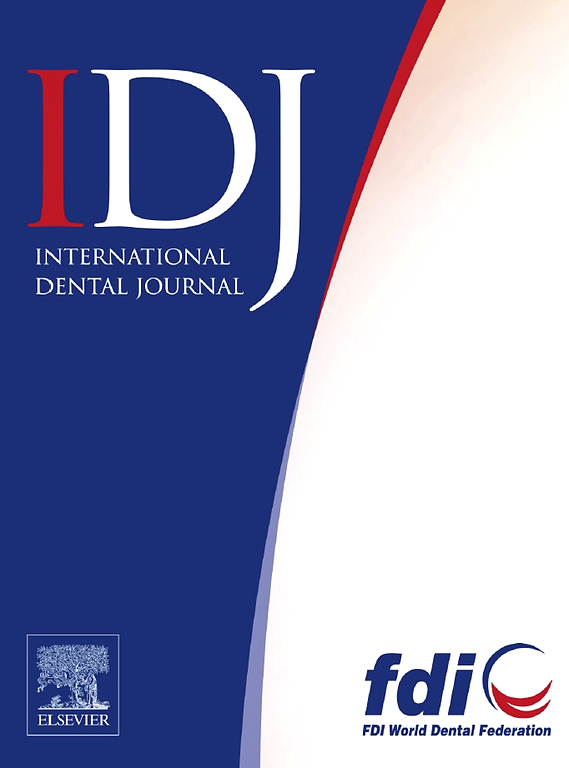应用等离子体修饰制备具有骨整合和抗菌双重功能的钛种植体
IF 3.7
3区 医学
Q1 DENTISTRY, ORAL SURGERY & MEDICINE
引用次数: 0
摘要
钛种植体在临床中应用广泛;然而,他们仍然面临着诸如植入物松动和感染等挑战。最近的研究集中在提高整合和抗感染能力上。本研究采用低温等离子体处理在钛种植体表面制备双功能修饰层,为同时促进骨整合和有效抑制细菌感染提供了一种有前景的策略。材料和方法这是通过在钛植入物表面沉积六甲基二矽氮烷(HMDSZ)薄膜并接枝热敏复合水凝胶来实现的,该水凝胶被设计为药物递送系统。使用天然交联剂genipin将氯己定固定在种植体环上(长度为2mm)。同时,将骨形态发生蛋白-2固定在种植体(长度为6mm)上,控制释放,促进骨再生,并具有较强的抗菌作用。进行了各种实验分析来表征样品,包括亲水性,官能团,元素组成和表面形貌的评估。通过体外试验(细胞毒性、矿化和抗菌试验)和体内动物实验(骨与种植体接触和骨膜测试)进行验证。结果生物相容性试验表明,经等离子体处理的骨表面无细胞毒性,有利于成骨细胞分化和骨整合。水凝胶有效地作为生长因子和抗菌剂控释的载体,从而促进钛种植体的骨整合和抗菌性能。在猪模型的体内研究表明,与未治疗和商业植入物相比,在2周内,猪模型的骨整合和抗菌效果更好。结论本研究提出的表面修饰方法成功制备了具有双功能表面的钛种植体,提高了钛种植体的骨整合效率和抗菌能力。该方法通过使用生长因子和抗菌剂使种植体发挥特定功能,潜在地推进了种植体技术并改善了临床结果。本文章由计算机程序翻译,如有差异,请以英文原文为准。
Development of Dual-Functional Titanium Implant for Osseointegration and Antimicrobial Effects via Plasma Modification
Introduction and aims
Titanium dental implants are widely used in clinical practice; however, they still face challenges such as implant loosening and infection. Recent studies focus on improving integration and infection resistance. In this study, a low-temperature plasma treatment was employed to fabricate a dual-functional modification layer on the titanium implant surface, offering a promising strategy that simultaneously promoted bone integration and effectively inhibited bacterial infection.
Materials and methods
This was achieved by depositing a hexamethyldisilazane (HMDSZ) film on the surface of titanium implants and grafting a thermosensitive composite hydrogel designed as a drug delivery system. The natural cross-linker genipin was used to immobilize chlorhexidine on the implant collar (2 mm in length). Meanwhile, bone morphogenetic protein-2 was immobilized on the implant body (6 mm in length), ensuring controlled release to promote bone regeneration and provide strong antibacterial effects. Various experimental analyses were conducted to characterize the samples, including assessments of hydrophilicity, functional groups, elemental composition, and surface morphology. Validation was carried out through in vitro tests (cytotoxicity, mineralization, and antibacterial assays) and in vivo animal experiments (bone-to-implant contact and Periotest measurements).
Results
Biocompatibility tests indicated that the plasma-treated surfaces did not exhibit cytotoxicity and facilitated osteoblast differentiation and osseointegration. The hydrogel effectively served as a carrier for the controlled release of growth factors and antibacterial agents, thereby boosting the osseointegration and antibacterial properties of the titanium implants. In vivo studies in swine models demonstrated superior bone integration and antibacterial efficacy compared to untreated and commercial implants within 2 weeks.
Conclusion
The surface modification method proposed in this study successfully produced titanium implants with dual-functional surfaces, enhancing both osseointegration efficiency and antibacterial capability.
Clinical Significance
This approach enables implants to perform specific functions through the use of growth factors and antimicrobials, potentially advancing implant technology and improving clinical outcomes.
求助全文
通过发布文献求助,成功后即可免费获取论文全文。
去求助
来源期刊

International dental journal
医学-牙科与口腔外科
CiteScore
4.80
自引率
6.10%
发文量
159
审稿时长
63 days
期刊介绍:
The International Dental Journal features peer-reviewed, scientific articles relevant to international oral health issues, as well as practical, informative articles aimed at clinicians.
 求助内容:
求助内容: 应助结果提醒方式:
应助结果提醒方式:


